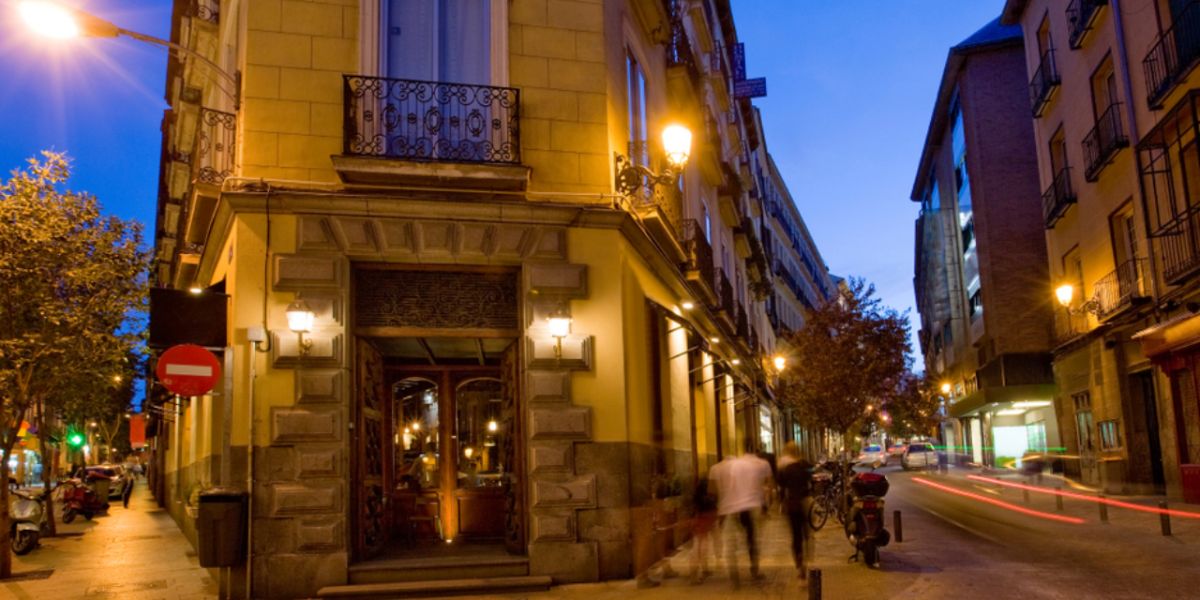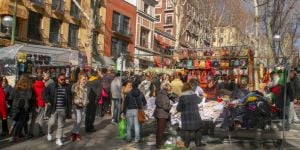
Location is probably the most important determining factor when purchasing a home. You see, no matter how much you like your apartment or house, if the area is unsuitable for your needs, your quality of life and the enjoyment of your home will suffer.
The prospect of finding a home in the right neighborhood is daunting enough, but even more so when you're doing it in a foreign country. If you're new to Madrid, choosing a locale can be challenging, especially if you don't know it all that well. Picking the right area requires research, and everyone will have their preferences and ideas about what they want. In this guide, we'll furnish you with some insights into Madrid neighborhoods as well as provide you with a few tips to help you select the right one.
Madrid has an abundance of choices for everyone, from young students wanting nightlife on their doorstep to families dreaming of a garden and pool.
Popular neighborhoods in Madrid
One of the first decisions you'll have to make about living in Madrid is whether to find a home in and around the city center or in the suburbs. Both offer benefits and drawbacks. In the suburbs, rental prices are generally lower, and homes are larger. You're more likely to find a place with a garden and be nearer to the city's best international schools. However, you'll definitely need a car to get around. The city center puts you within easy reach of all the nightlife, culture and excitement Madrid has to offer. You can easily get around Madrid by public transport, but flats tend to be smaller, and rents can be much higher.
City center neighborhoods and districts in Madrid
Discover some of Madrid's city center neighborhoods and districts:
Atocha
This central neighborhood is the home of Madrid's main train station, Estación de Atocha. The area is approximately a 10-minute metro ride away from the heart of Madrid and is a popular choice for students because it's so well connected to the city's many universities. Atocha is known for its shops, bars, restaurants and museums.
The main attractions include the Museo del Prado, Museo Arqueológico, Museo Thynssen-Bornemisza and Teatro Kapital. Parque del Buen Retiro is also nearby. This beautiful and expansive green space is known as the Spanish Hyde Park and boasts a boating lake, rose garden, glass pavilion (Palacio de Cristal) and thousands of trees.
Chamberí
This pretty, elegant neighborhood is lauded for its beautiful architecture and stately historic mansions on wide avenues that are now home to some foreign embassies. It comprises several neighbourhoods and for two centuries, was where many aristocrats had their homes. This central district also hosts plenty of bars, restaurants and delightful plazas.
The main attractions in Chamberi include the Museo Sorolla, the Abadia Theatre, Cine Paz and Santander Park.
La Latina
This historic locale in downtown Madrid is one of the capital city's most traditional neighborhoods. The narrow streets are lined with tapas bars, restaurants, large plazas and old churches. One of the area's biggest draws is El Rastro, a weekly open-air flea market held every Sunday and on public holidays. La Latina rental prices are good, but the quality of homes can be hit or miss.
The main attractions in addition to El Rastro include Teatro La Latino, Mercado de Cebada, San Andrés Church, and Cava Baja, the city's most famous street for tapas.
Malasaña
This hip, historic area is a stone's throw from the center of Madrid and is a trendy, bohemian place with a wide selection of chic boutiques, cafés and shops. At night Plaza del 2 de Mayo, a beautiful square in the heart of the neighborhood, is the hub of the local nightlife. In recent years, the area has undergone gentrification, and consequently, rental prices have crept upwards.
The main attractions include the Church of San Antonio de los Alemanes, the Baroque Church of San Martin and the History Museum. Inside are collections highlighting the customs, traditions and arts of Madrileños (people from Madrid).
Salamanca
One of Madrid's most upscale neighborhoods is located northeast of the historical center. It dates back to the 19th century and was designed to be an area exclusively for Madrid's aristocracy and bourgeoisie. Among today's residents are businesspeople, financial and political elites and diplomats. Within its boundaries are high-end shopping stores and Calle Ortega y Gasset, also known as the Golden Mile of fashion.
The main attractions include Plaza de Felipe II and the Juan March Foundation, which hosts contemporary art exhibitions.
Retiro
This neighborhood lies just south of Salamanca and east of the park from which it gets its name - El Parque del Buen Retiro, nicknamed "El Retiro" by the city's residents. This middle/upper-class locale is an excellent place for families with children. It's laidback, well-connected to the city center and features a wealth of bars, shops and restaurants.
The main attractions include the Casa Arabe cultural center and the 18th-century Puerta de Alcalá Gate.
Suburban areas in Madrid
Away from the central areas are delightful suburbs that attract more affordable rents and property prices than in the heart of Madrid.
La Moraleja
This is an attractive residential area in the north of Madrid. If you're looking for a new, detached home, this is the place for you. It's close to private schools with excellent reputations as well as upscale restaurants and shops.
Pozuelo
This is another affluent suburb and it's located northwest of Madrid's center. The area is popular with expat families because it boasts high-quality properties, is well connected to the downtown core by train and is home to several international companies.
Among the other suburbs offering a good quality of life with excellent amenities, green spaces and public transport links to the center are Las Rozas and Majadahonda.
How much does it cost to rent a property in Madrid?
Being the country's capital, rental prices tend to be higher in Madrid than in many other places in the country. Prices vary according to the type and size of property, neighborhood and proximity to the center.
To give you an approximate idea, the average rental prices in Madrid as of January 2025 are between €1,050 and €1,800 per month for a 1-bedroom city center apartment and between €800 and €1,200 per month for a similar property outside of the center. A three-bedroom apartment in the city center will set you back around €1,800 to €3,000 per month, while the same property outside of the center will cost you between €1,200 and €2,000 per month.
How much does it cost to buy a property in Madrid?
Property prices in Madrid are generally on the expensive side. As of January 2025, the average price per square meter to buy a city center apartment is €6,565.64 (ranging from €5,500 to €8,500). The average price per square meter for an apartment outside the center is €3,840.42 (ranging from €3,000 to €5,000).
Where to look for a property in Madrid
Whether you are looking to buy or rent accommodation in Madrid, take advantage of the many online resources to help you find your home. These include property portals and the websites of estate agents and rental agencies. You can also check out the classified ads sections of local newspapers and tell everyone you know that you're looking for a place. Word of mouth is an underrated but helpful way of finding a property that will suit your needs.
Tips for picking your perfect Madrid neighborhood
You will learn a lot by visiting neighborhoods and walking or driving around the streets. To help you decide whether one area or another is a good fit for you, here are a few important factors to consider:
Commuting time: Distance matters if you need to travel to work every day. If you work in the city center of Madrid but live in the outer suburbs, your commute to and from work could take two hours or more.
Recreational activities: You'll want to make sure there are suitable recreational activities nearby that match your lifestyle. For example, if you're particularly sporty, are there swimming pools and sports centers in the area? If you like to walk or cycle, does your neighborhood have parks and cycling paths?
Shops: If convenience is a priority, you may want to consider a location that either has or is very close to an array of shops, supermarkets and pharmacies.
Schools: If you have children or are planning to, do some research on the schools. Entry to Spanish state school depends on the catchment area, and so this may affect where you want to live.
Public transportation: If you rely on public transport to get you around, make sure your home is near bus, train and metro lines that will easily get you to where you want to go. Among the questions you'll want to consider are:
- How close are the nearest bus/train/metro stops?
- Will I have to make multiple changes to get to work?
- What are the monthly costs?
- How long does it take to get to places?
Consider renting before buying: In other words, "try before you buy." This will give you ample opportunity to see whether the neighborhood is right for you and your family in the long term.
When deciding on a neighborhood, make a list of what's essential to you, just as you would when considering a home. Think about what's crucial and what you are prepared to sacrifice.
Good to know:
Visit prospective neighborhoods at different times of the day to get more of a feel for the place. An area may be quiet during the day, but is it still just as tranquil late at night? Visit on the weekends too.
Crime statistics in Madrid
Like all cities, crime exists in Madrid. However, overall it is considered a relatively safe place. According to the Ministry of the Interior, the number of crimes committed in the third quarter of 2024 in the Community of Madrid fell by 1.1% compared to the same period the previous year. By comparison, there was a general increase of 1.2% at the national level.
As the country's capital and a popular tourist destination, expats should watch out for pickpocketing and theft. These crimes are most commonly reported around Atocha train station, in older areas of Madrid like Plaza Mayor and the Royal Palace, at El Rastro (Madrid's large Sunday flea market), and in the metro system. Street crimes peak during the holiday periods of Easter/Semana Santa, the summer tourist season, and late November to early January.
Good to know:
If you need to report a crime, you may do so in English through the Foreign Tourist Assistance Service (SATE), which works in conjunction with local police.
Parking in Madrid
As a historic city, many buildings in Madrid's center don't have parking garages, and parking spaces are not usually included with flat rentals. Car owners will likely use one of the many paid parking garages or lease a nearby parking space by the month.
Good to know:
Many people living and working in Madrid's core don't really need a car to get around, although they may own one for traveling further afield. The city's public transportation offers extensive metro, bus and train networks. For more information, check out the plethora of English information on the various ways to get around the city.
Street parking in Madrid is limited and divided into regulated zones by color. Places with yellow markings or with a sign stating Prohibido estacionar (parking prohibited) are off-limits. The rest of the parking zones are marked either blue, green, blue-white, blue-orange or red-orange. To safely park in one of these areas, look for the nearby ticket machine, pay for the desired amount of time, and display the ticket on your car's dashboard. Most streets in the center are in the blue zone.
Useful links :
We do our best to provide accurate and up to date information. However, if you have noticed any inaccuracies in this article, please let us know in the comments section below.








